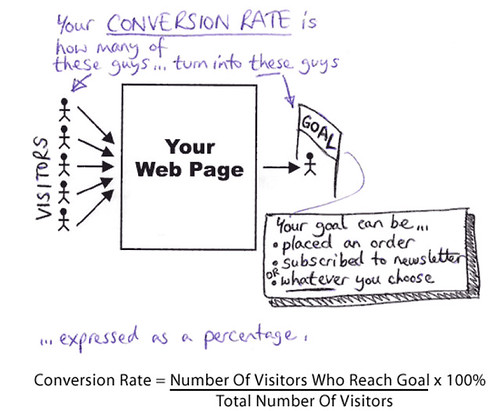BY Mike Moran
Photo credit: Stefson
You have probably thought about what your most important online conversion is–check out (if you’re an e-Commerce site), call on the phone, fill out a Web contact form, or something else (if you’re not an e-Commerce site). Good Internet marketers pay close attention to conversion rates, checking their Web analytics to see how many folks came to the site and how many actually converted. But admit it. Are you a good Internet marketer?
Many marketers I speak with let it slip when I ask them. They really don’t look at the numbers. Oh, somebody does. Some green eyeshade guy in the analytics department who e-mails a link to a report each month–a report you never look at.If I really press marketers, they often haven’t even thought through how to calculate their conversion rate. If you sell low-consideration products, such as Amazon, then people come to your site every day who complete their purchases in the same visit. Amazon should divide the number of purchases by the number of visits for their conversion rate.
But you might sell a high-consideration product or service, such as a car or a consulting project. Your customers likely visit your site several times before they convert, so you don’t want to figure your conversion rate based on visits, but rather on unique visitors.
Think about it this way. If every visit to your site could result in a purchase, then divide by visits. If your customers would never buy from you three visits in a row, then divide by visits. So, ask yourself if you’ve thought this through. Do you even know how you’ve calculated your conversion rate?
In some sense, it doesn’t matter, because what you care about is the trend–the difference between last month’s conversion rate and this month’s, for example. As long as you use the same method each month (divide by visits or divide by visitors), you can still compare last month to this month to make the decisions you need to make.
But, at a deeper level, it does matter. What I have called mini-conversions (and Avinash Kaushik popularized micro-conversions) depend on following visitors step-by-step. Instead of looking at the big conversion at the end, look at the smaller steps that people take along the way and how your marketing is persuading them to take each one. By dividing by the right metric, you can look back over multiple visits (or not) to improve your marketing.
READ MORE:

No comments:
Post a Comment